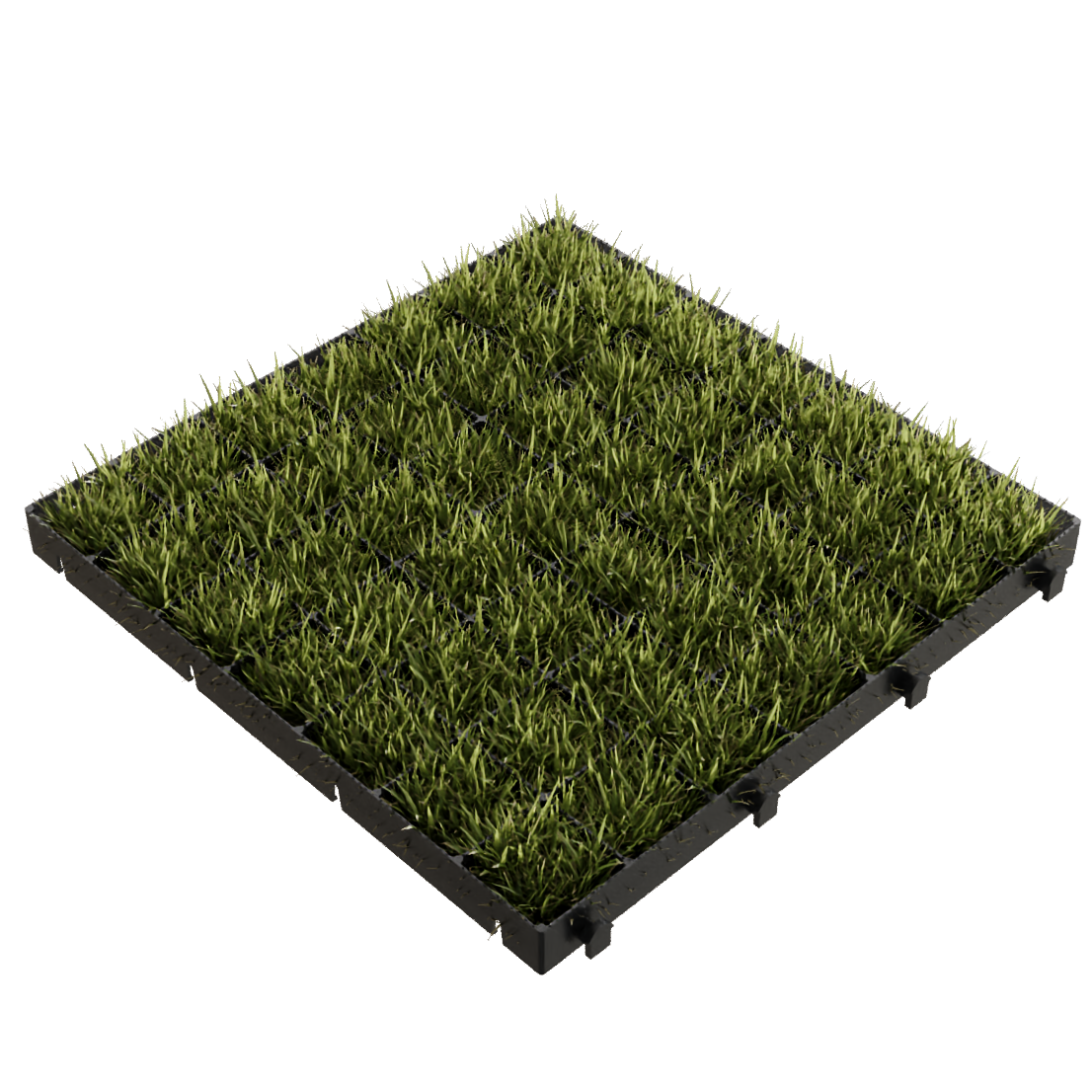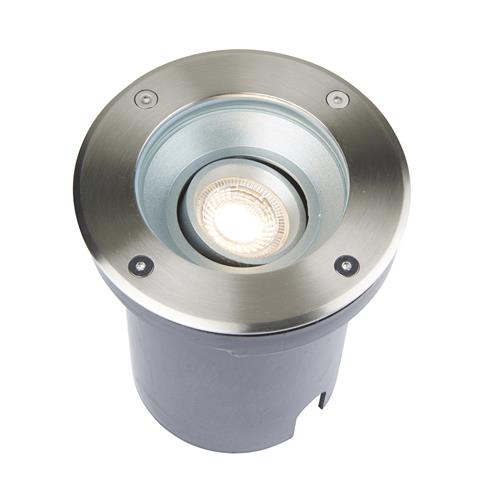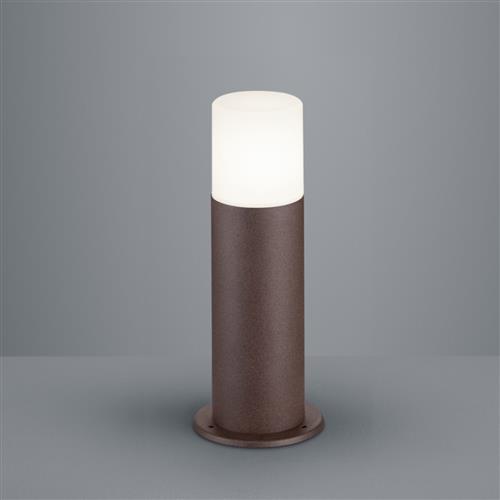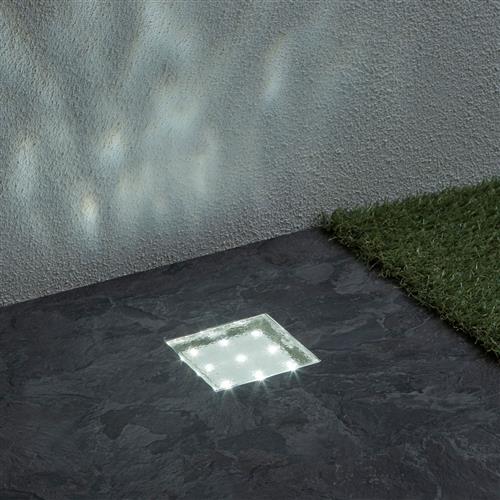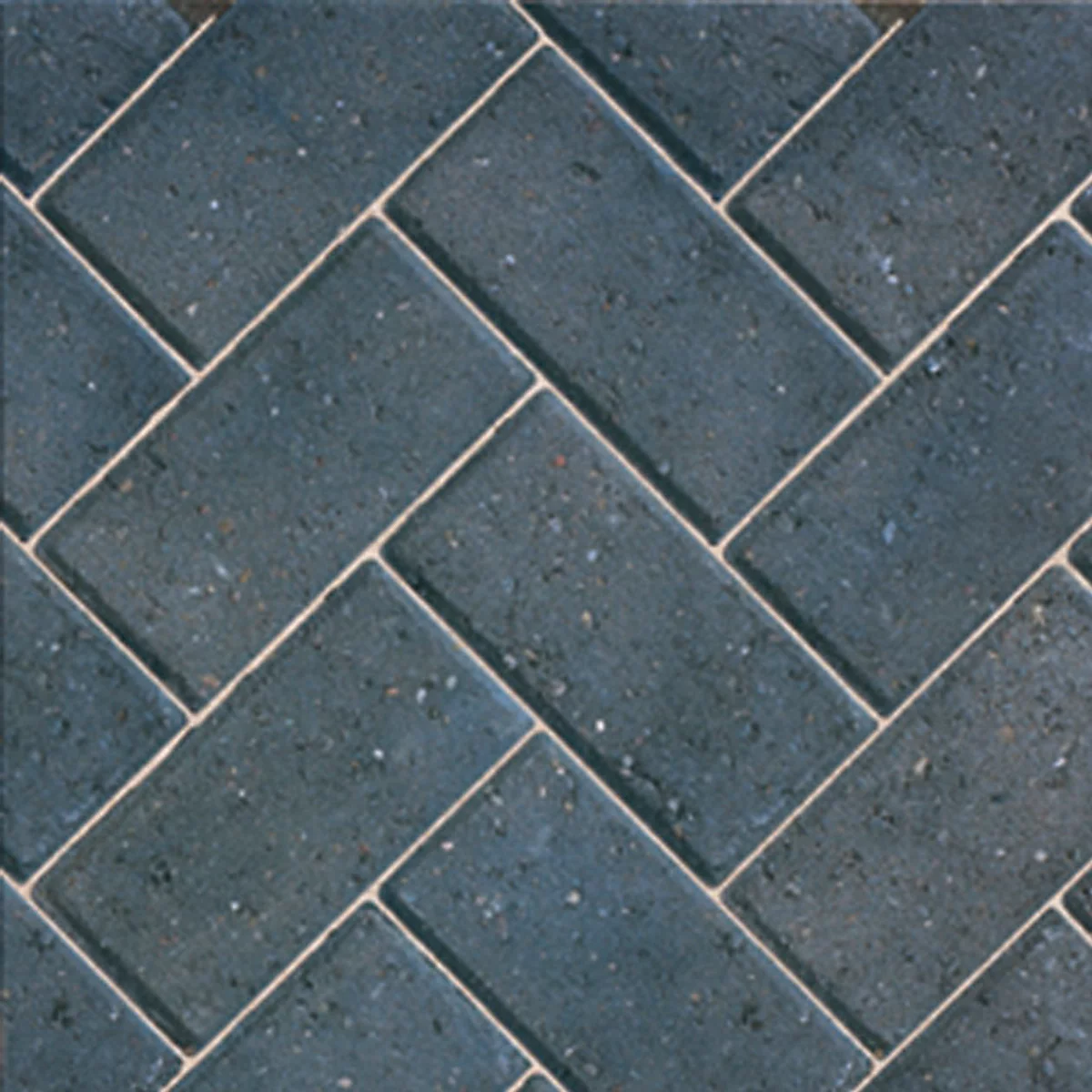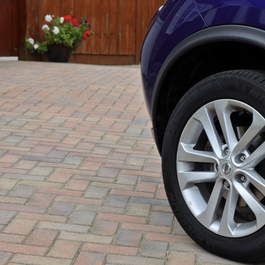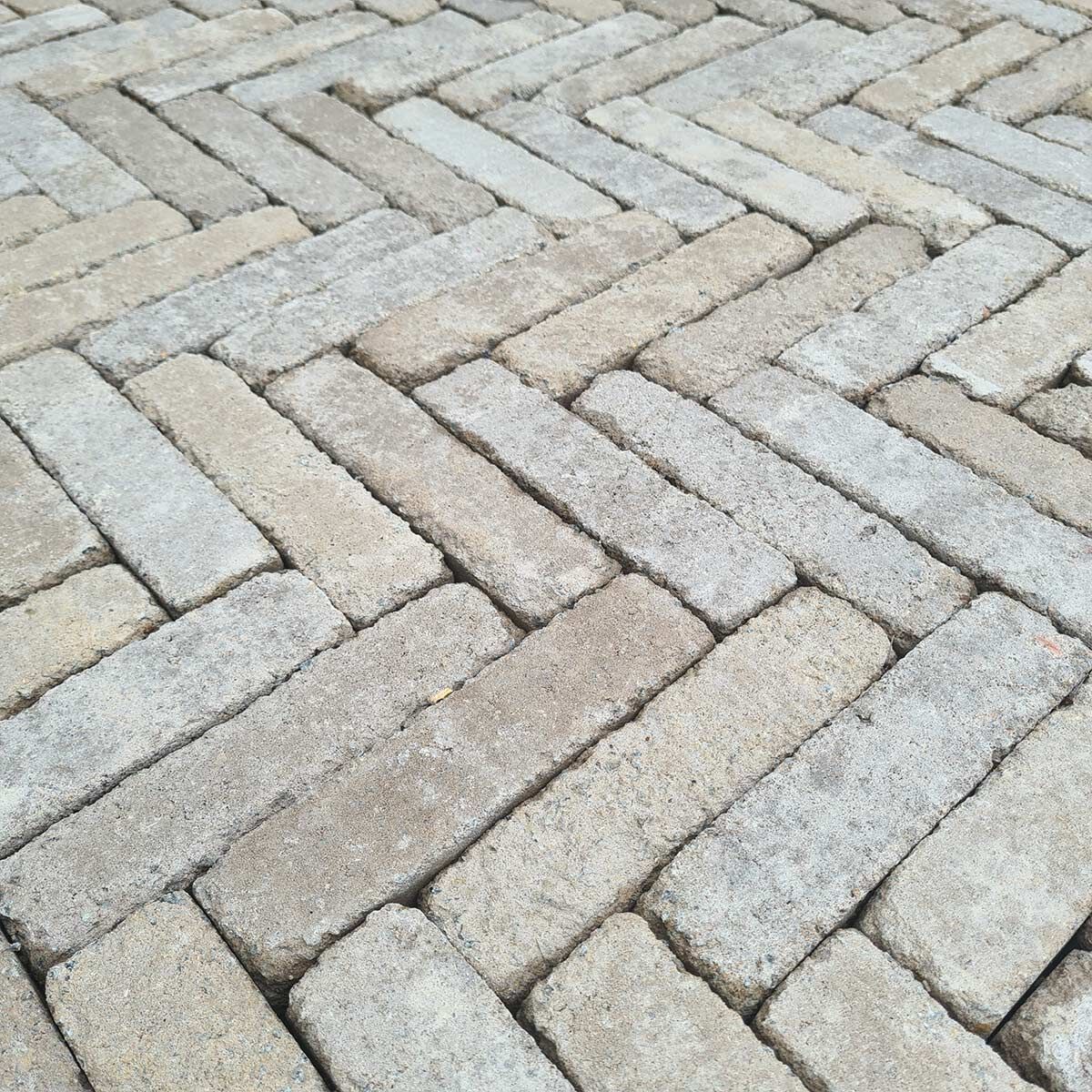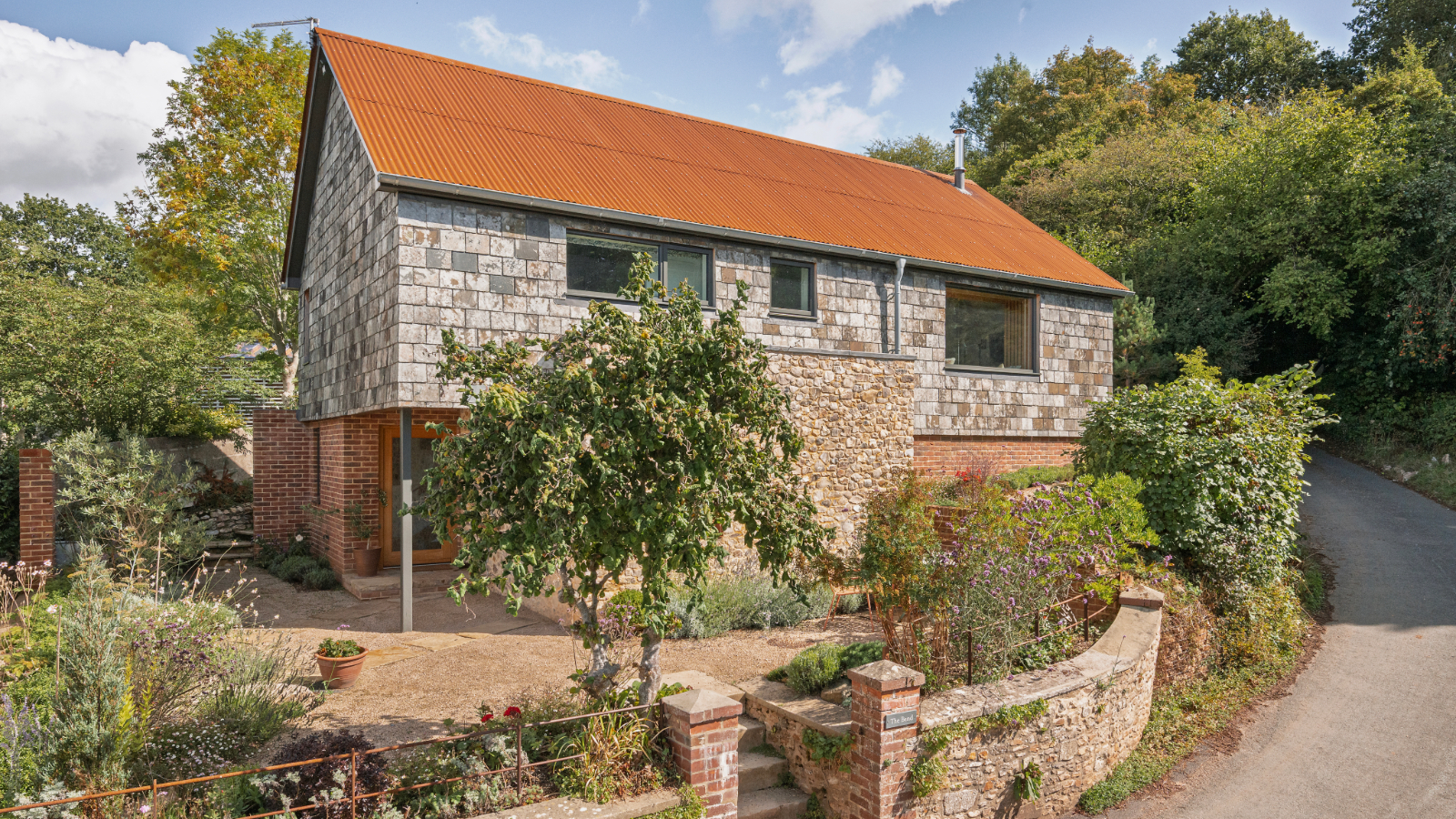Modern driveway ideas that wow — the best materials and layouts to try now
These modern driveway ideas will give your home a contemporary edge and step up its kerb appeal
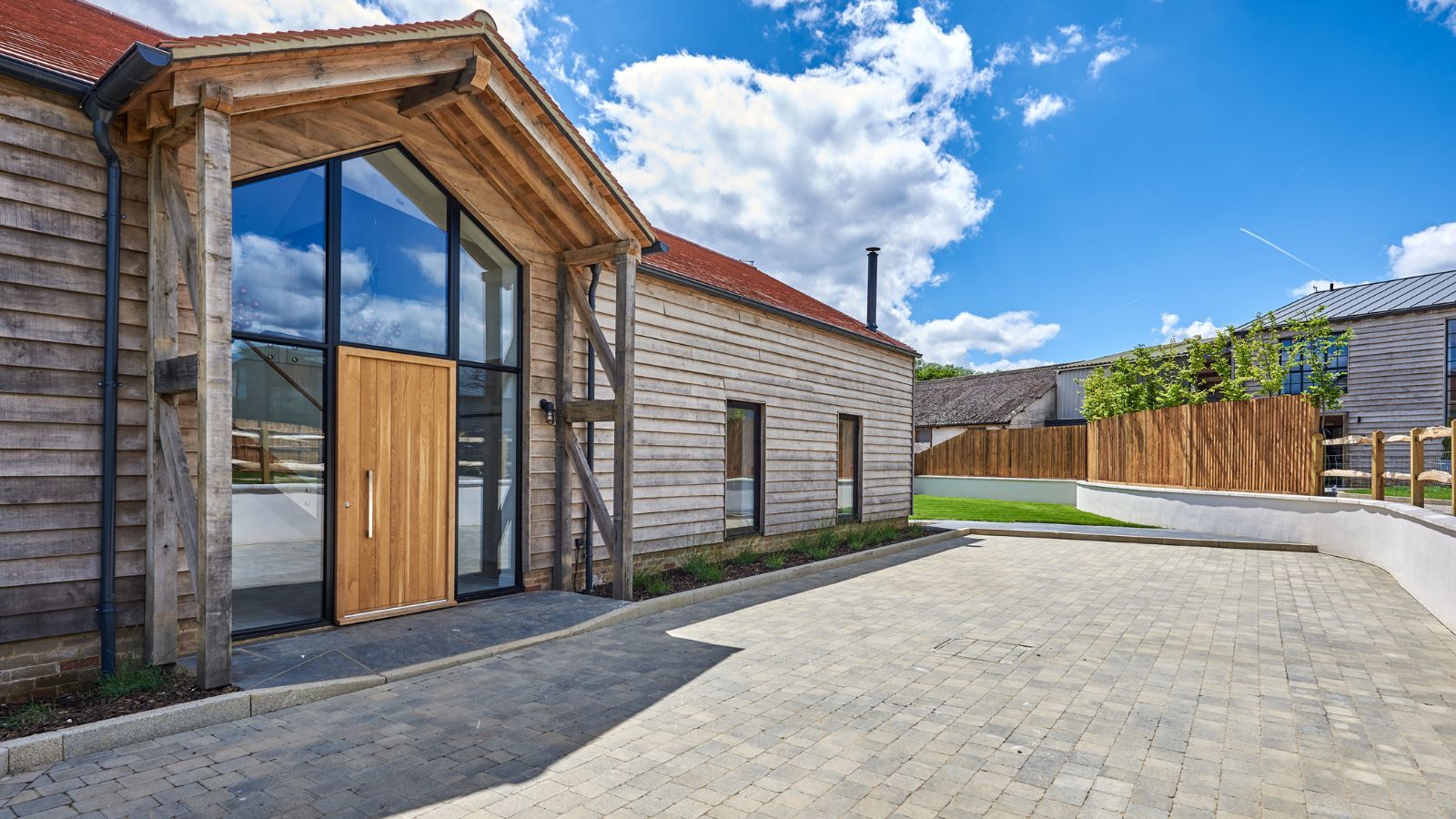
- 1. Mixed Paving Patterns
- 2. Lay a gravel grid base
- 3. Resin-bound surfaces
- 4. Pair a pale driveway with a contrasting border
- 5. Create a calm, tonal entrance
- 6. Coordinate your front steps
- 7. Choose soft, permeable finishes
- 8. Use driveway lighting
- 9. Poured concrete designs
- 10. Use tonal block paving
- 11. Herringbone patterns
- 12. Modular paving & gravel joints
Your driveway might serve a practical purpose, but that doesn’t mean it has to be plain. With the right approach, your driveway design can instantly boost kerb appeal, set the tone for your home, and even elevate the look and feel of your front garden.
Modern driveway ideas now go far beyond basic concrete or tarmac. Think sleek paving in contemporary finishes, sustainable gravel grids, and subtle lighting that brings your entrance to life after dark. Whether you're working with a compact plot or planning a full front garden overhaul, the best driveway design is one that suits both your lifestyle and your home's style.
Modern driveway ideas to elevate your kerb appeal
From low-maintenance finishes to design-led details, these 12 modern driveway ideas are packed with inspiration to help you get the look just right
1. Combine mixed paving patterns for a sleek urban Llook
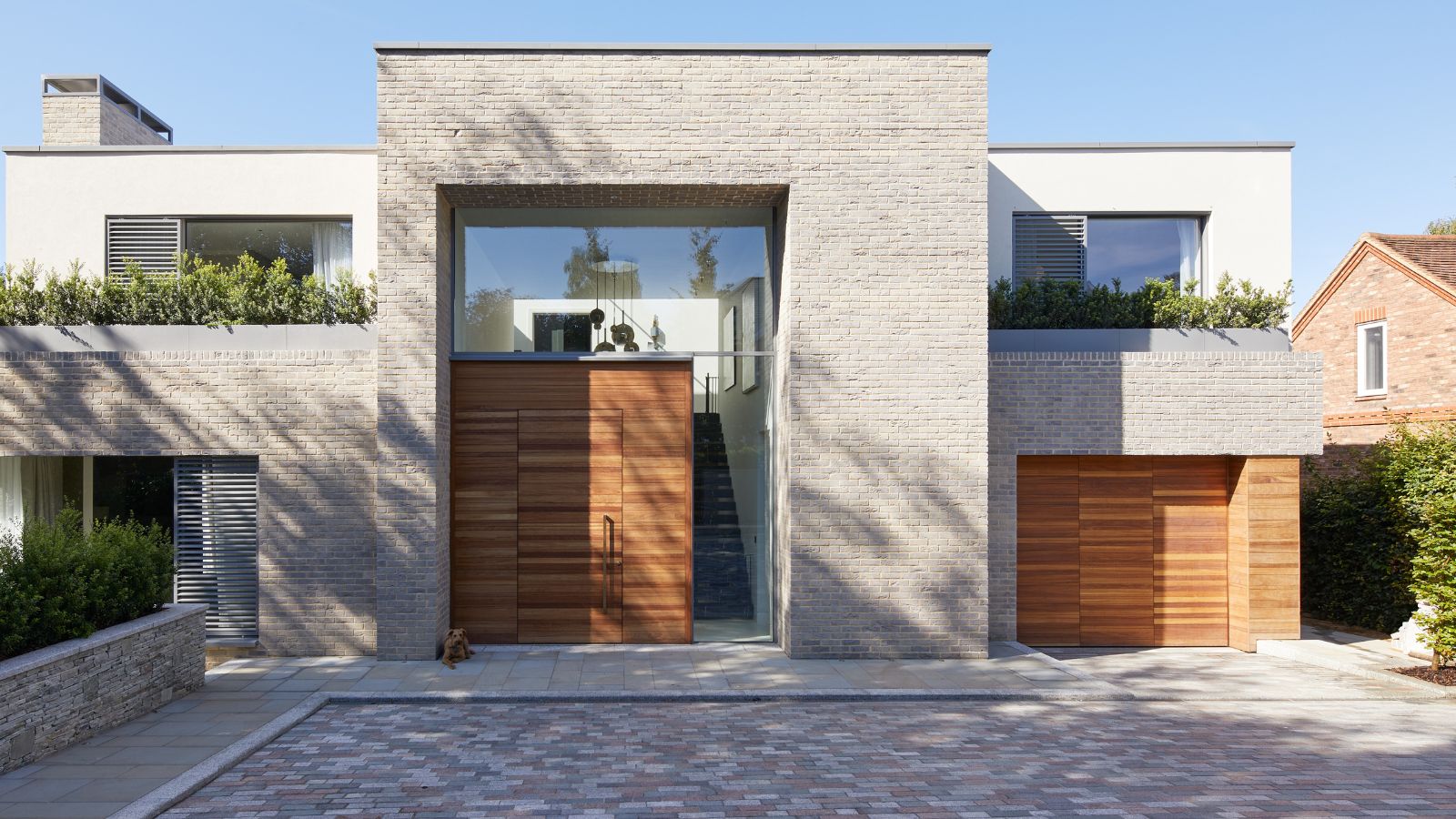
If your home has a modern exterior, consider using driveway paving to echo some of its key design details. In this scheme by Urban Front, warm timber cladding and pale brickwork are paired with a mix of grey-toned cobble-style pavers. The effect is stylish but understated – ideal if you want to add kerb appeal to your home without going too bold with the design.
Using slimline block pavers gives you plenty of design flexibility. “Slimline pavers support a design-forward approach by enabling a variety of laying patterns,” says Neil Bills, Director of Landscaping Products at Bradstone. “Whether it’s classic herringbone, basket weave, or a contemporary linear arrangement, slimline pavers provide the flexibility to create bespoke designs tailored to individual tastes.”
A subtle contrast in tone or a change in pattern around the edges can help zone your parking spaces. For extra finesse, consider matching the paving to other elements like the garage surround, boundary wall or path to the front door.

Neil Bills is General Manager at Bradstone, specialising in hard landscaping products with a focus on innovation, design and durability.
2. Lay a gravel grid base for a low-impact, high-style finish
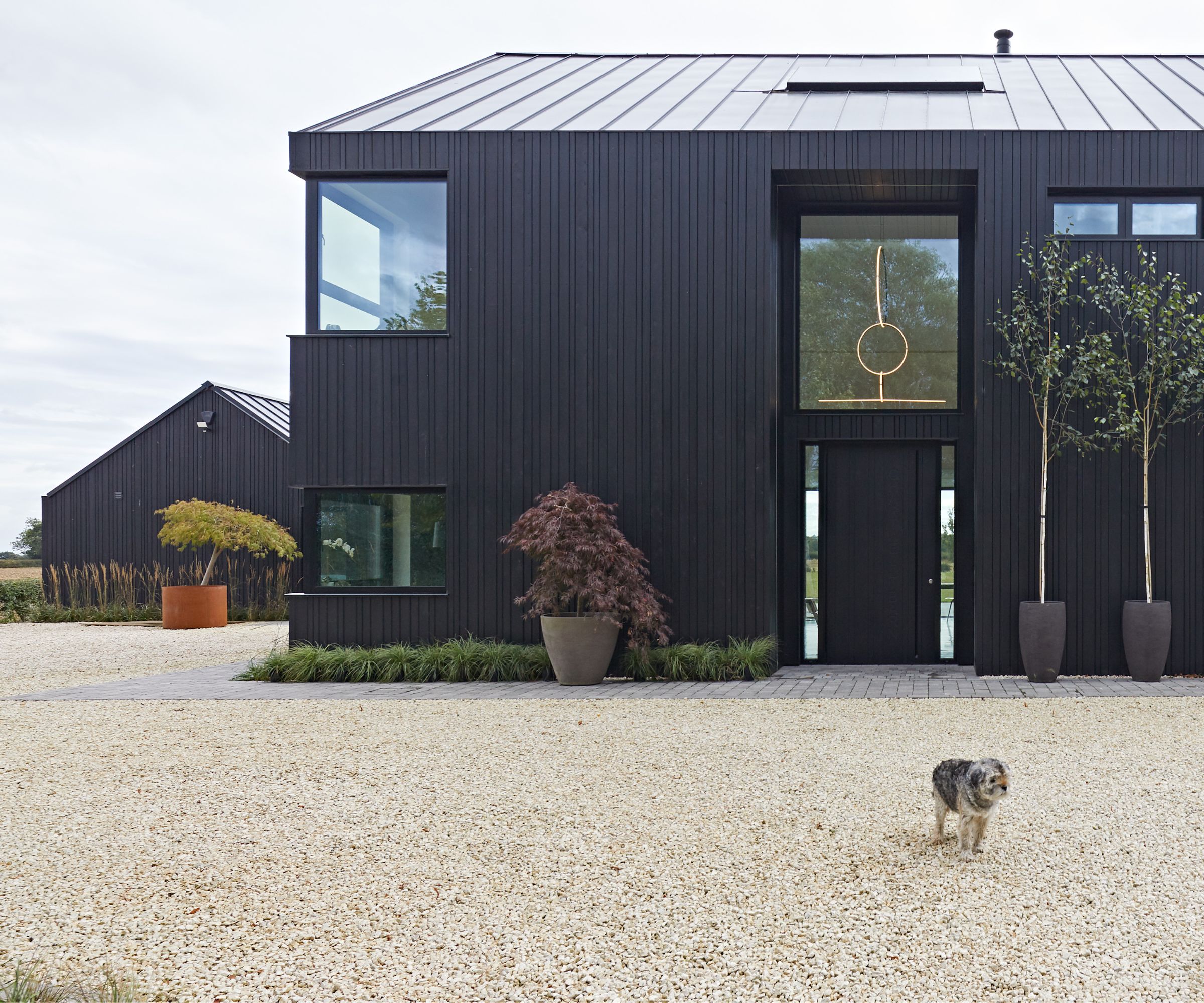
Gravel driveways have always been a classic choice for country homes, but when they are paired with minimalist landscaping and modern architecture they take on a far more contemporary edge.
Bring your dream home to life with expert advice, how to guides and design inspiration. Sign up for our newsletter and get two free tickets to a Homebuilding & Renovating Show near you.
To keep things practical as well as stylish, install a gravel grid system beneath the surface. “Gravel parking grids can be made from 100% recycled plastic and are a perfect example of this modern approach,” says Ted Bromley-Hall, managing director at IBRAN. “They provide a stable base for gravel driveways while preventing the typical issues of rutting and migration that often plague traditional loose gravel installations.”
This kind of base not only keeps gravel in place and improves drainage, but also supports heavier loads, including electric vehicles. It’s a clever, sustainable option for anyone wanting the charm of gravel with fewer long-term maintenance headaches.

Ted Bromley-Hall is Managing Director at IBRAN, a UK-based company specialising in sustainable ground reinforcement systems. With a focus on environmentally conscious design and innovation, Ted leads the development of high-performance gravel and grass driveway grids made from 100% recycled UK plastic.
3. Choose a resin-bound surface for a clean modern look
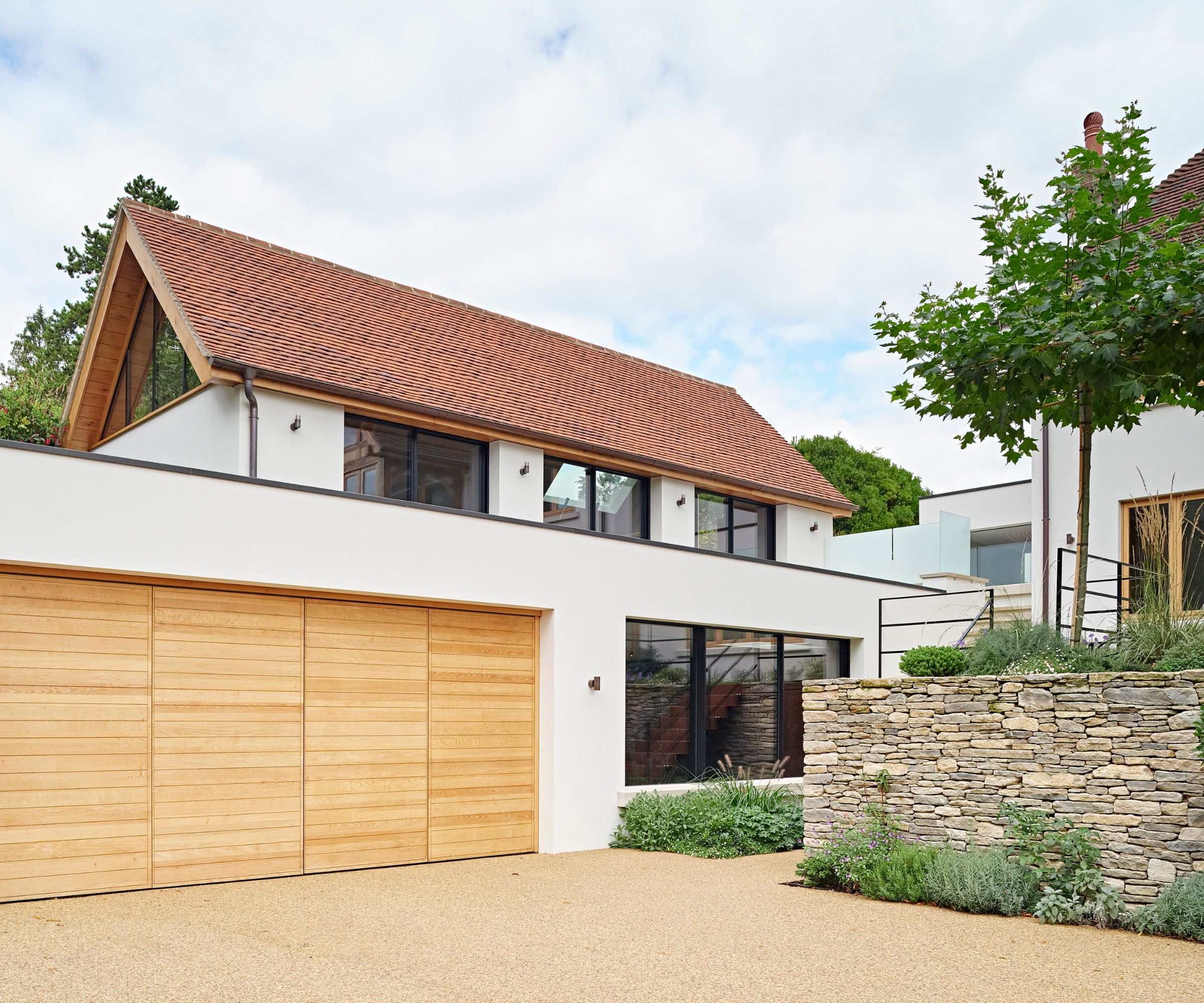
If you're after a driveway that’s equal parts stylish and easy to maintain, a resin-bound finish is a good choice. In this design from Urban Front, warm golden tones in the resin complement the pale stone walling and oak-clad garage doors, creating a soft, cohesive look that feels considered from the moment you pull up.
Resin-bound surfaces are smooth underfoot, won’t scatter like loose gravel, and are permeable – helping surface water drain away naturally and supporting compliance with modern planning guidance. They’re also a great option for sloping plots or homes with level changes, as the finish sits flush with steps and boundaries.
“Grey resin driveways have been consistently popular with homeowners for several years, offering a sleek and versatile base,” says Neil Bills at Bradstone. “However, we’re now seeing a real shift towards warmer tones and earthy colours, reflecting broader trends - especially when paired with thoughtful soft landscaping.”
While resin driveway costs can vary depending on the size and finish, many homeowners see them as a worthwhile investment for their long-term durability and low-maintenance needs.
4. Pair a pale driveway with a contrasting border
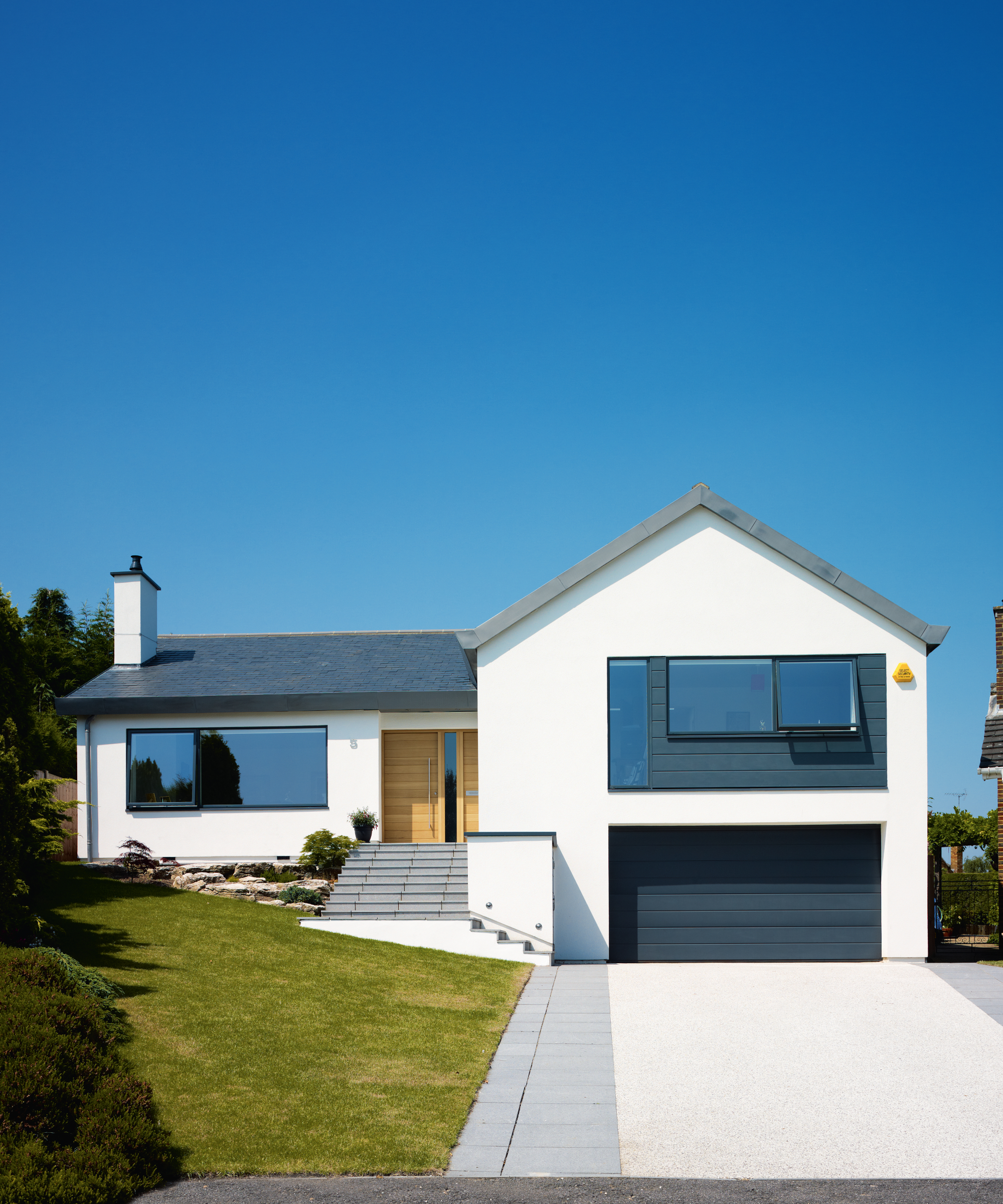
A light-toned driveway can completely lift the front of your home – especially when paired with a darker edging for definition. In this example, a pale resin surface creates a bright, open feel, while the sharp border in a darker paver adds contrast and helps visually contain the space. This combination works particularly well for smaller plots or darker façades, as the lighter tones reflect more natural light and make the approach feel more generous. It’s also a great way to frame your planting or define the driveway from the rest of the front garden.
5. Create a calm first impression with tonal paving and minimal planting
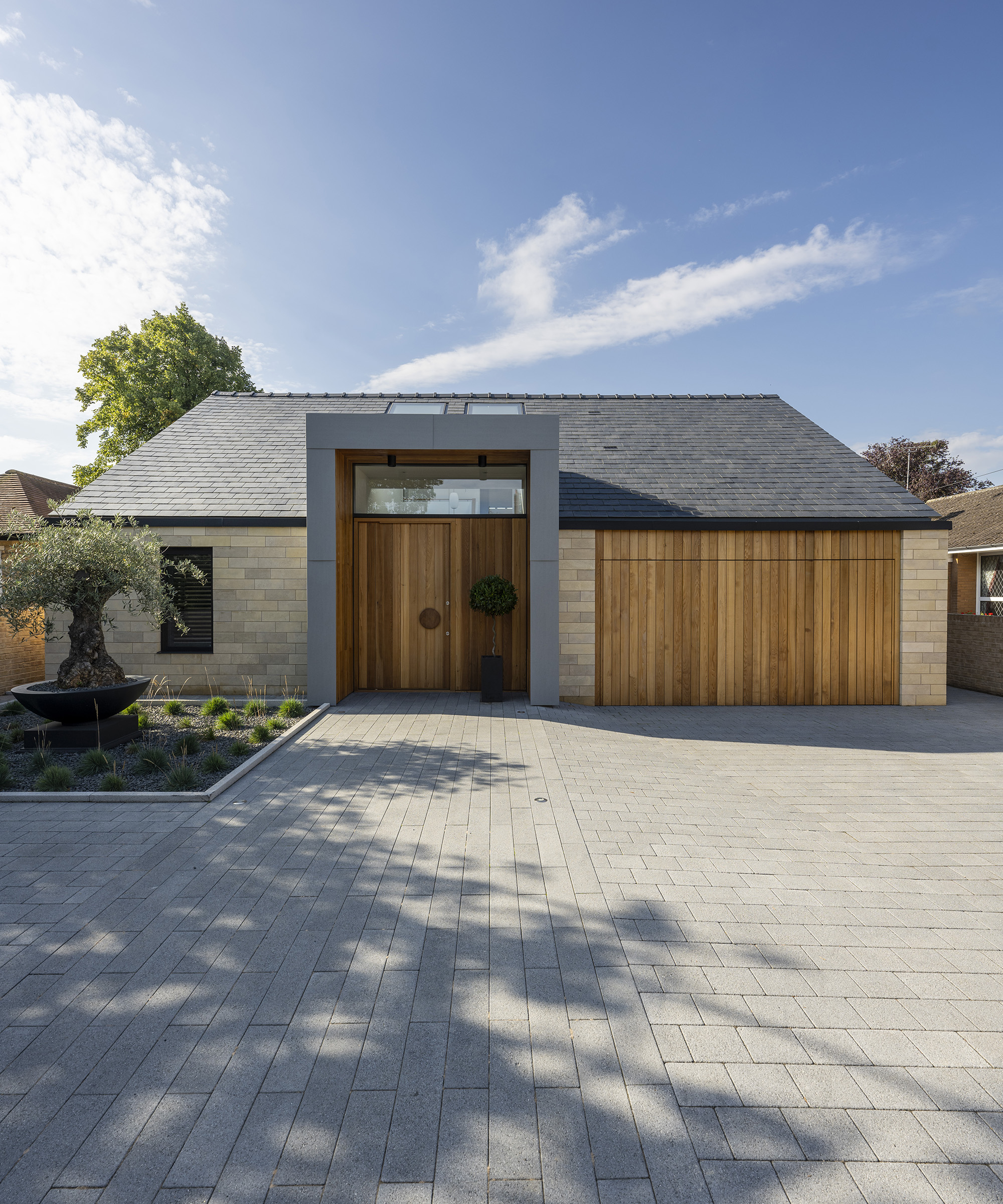
Modern driveways don’t always need to be bold to make an impact. This pared-back scheme at Stephen and Helen Surtees’ sustainable home shows how a simple, tonal palette can create a calming and cohesive entrance. Soft grey paving laid in clean lines pairs with pale stone and natural timber, offering a muted backdrop that blends beautifully with the surrounding materials.
Everything here feels intentional, from the direction of the paving – which mirrors the vertical cladding on the house – to the choice of low-maintenance planting. A single olive tree and clipped grasses are all that’s needed to soften the hardscape. This design is a reminder that choosing the right paving isn’t just about selecting the best driveway materials, it’s just as important to consider how they connect with the overall layout and feel of your home.
6. Coordinate your front steps with your driveway
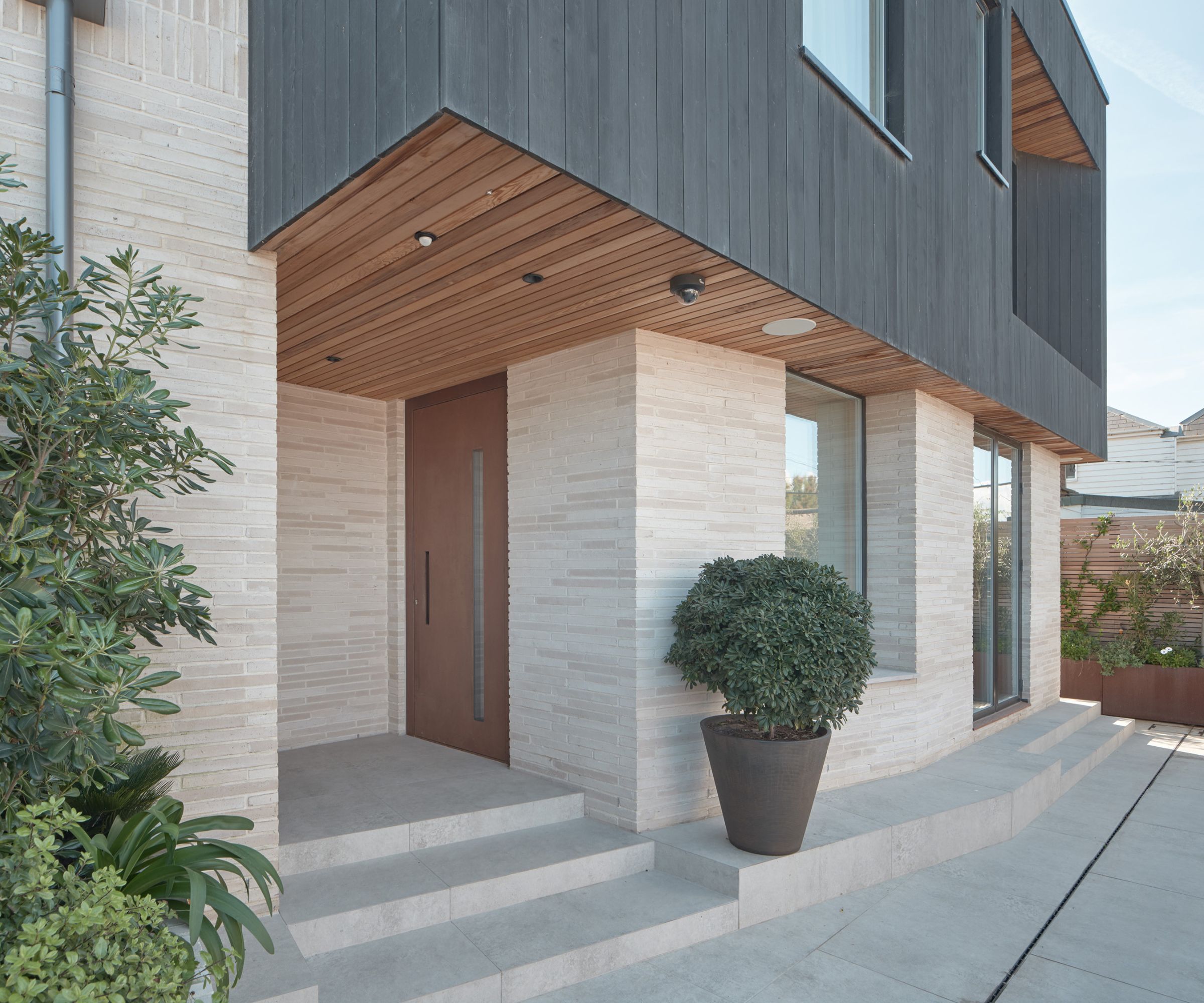
Try linking your driveway with the steps to your front door by using the same material or complementary tones. It’s a simple design choice that can make your entrance feel far more cohesive. In this example by Urban Front, large-format stone paving is laid across both the driveway and the steps, helping to visually connect the different levels.
Not only does this approach look smart and well considered, it’s also highly practical. A consistent surface reduces visual clutter and creates a more accessible route to the door, especially useful if your driveway includes a slope or change in height.
For a similar look, consider porcelain or concrete slabs in soft, neutral shades. A brushed or sealed finish will improve grip underfoot in wet or icy weather, while using a single format across the drive, steps, and landings keeps everything feeling seamless.
7. Choose soft, permeable finishes for a modern country feel
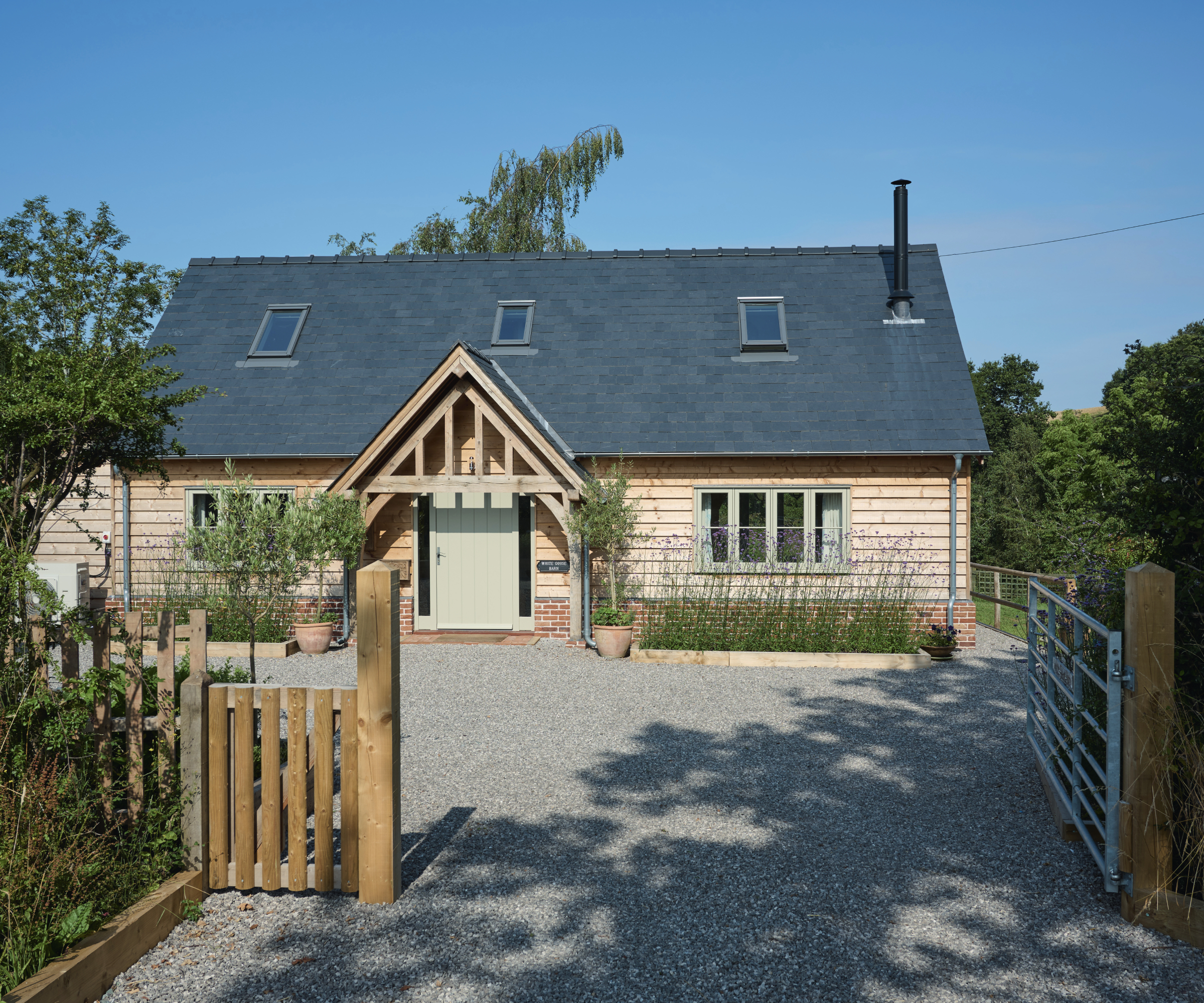
In rural or edge-of-village settings, a gravel driveway is often the most fitting choice. It sits comfortably alongside timber cladding, brick or stonework, offering a natural, relaxed finish that blends easily with the surrounding landscape. But gravel doesn’t have to mean traditional. As Heather Turner's oak-frame home demonstrates.
If you’re after an even softer, greener finish, consider a grass grid system – especially if you're working in an area with planning restrictions around impermeable surfaces.
"Grass parking grids allow homeowners to maintain a green space while still having a fully functional driveway," explains Ted Bromley-Hall at IBRAN. "It’s essentially a hidden driveway that blends seamlessly with the lawn – a solution that’s particularly popular in areas where planning regulations require a certain percentage of permeable surfaces."
8. Light up your driveway to make an entrance
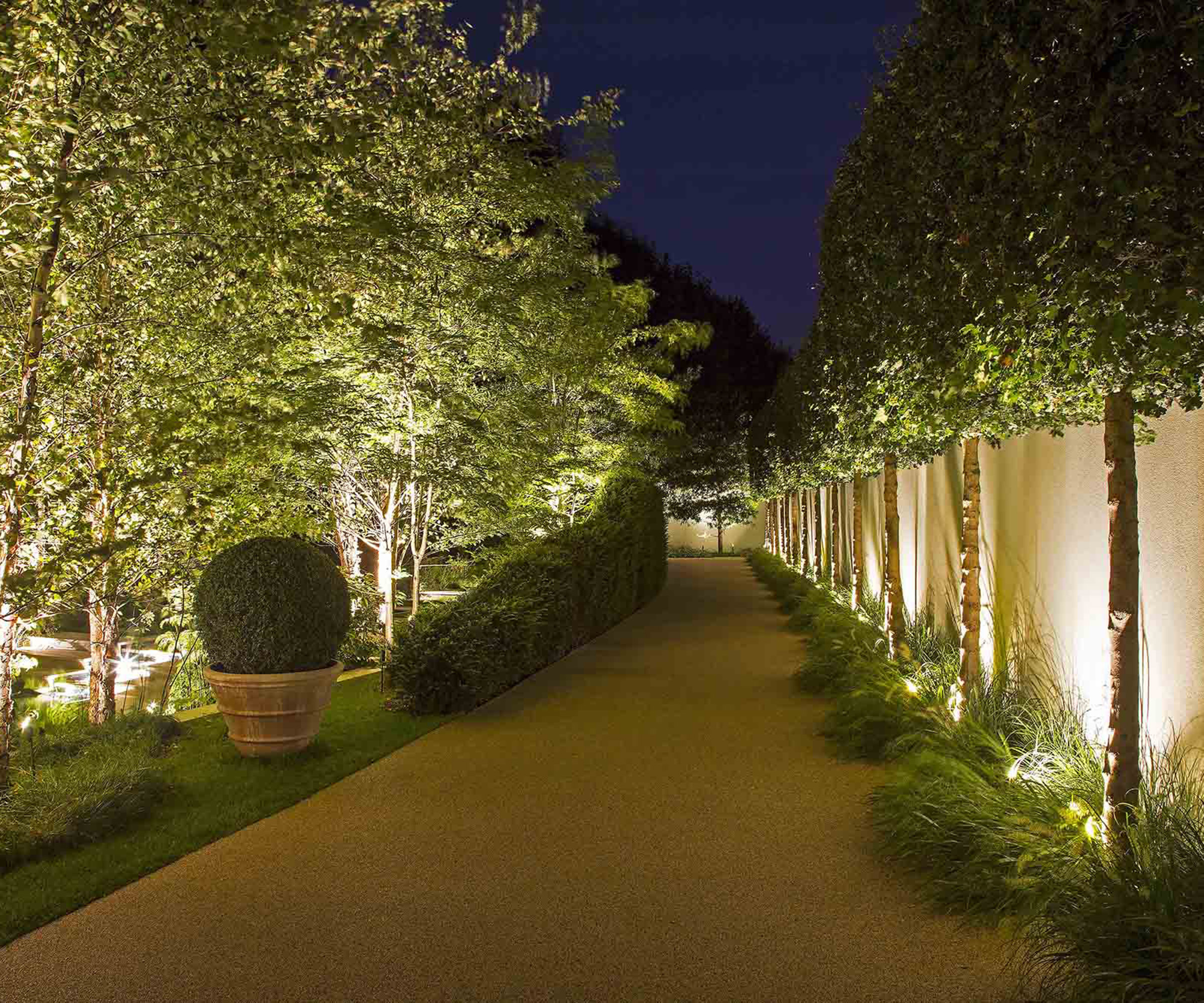
Well-placed driveway lighting can make all the difference to how a driveway looks and feels after dark. In this design by John Cullen Lighting, uplighters are positioned beneath trees and along borders to cast a soft, dappled glow that subtly leads the way to the front door.
“Recessed ground lights are perfect for this, especially if you don’t want to lose valuable turning space with big lighting fixtures,” says Matthew Currington, technical director at The Lighting Superstore. “They’re impactful too and create an alluring charm that leads the eye along the driveway towards the front door.”
This kind of setup works best with structured planting, such as pleached trees, clipped hedging or ornamental grasses, which hold their form and reflect the light beautifully. For extra convenience, you can set smart outdoor lighting on a timer or adjust them from your phone to suit the time of day or season.

Matthew Currington is Technical Director at The Lighting Superstore, where he helps homeowners find practical, stylish lighting for every space.
9. Use poured concrete for a sharp, architectural finish
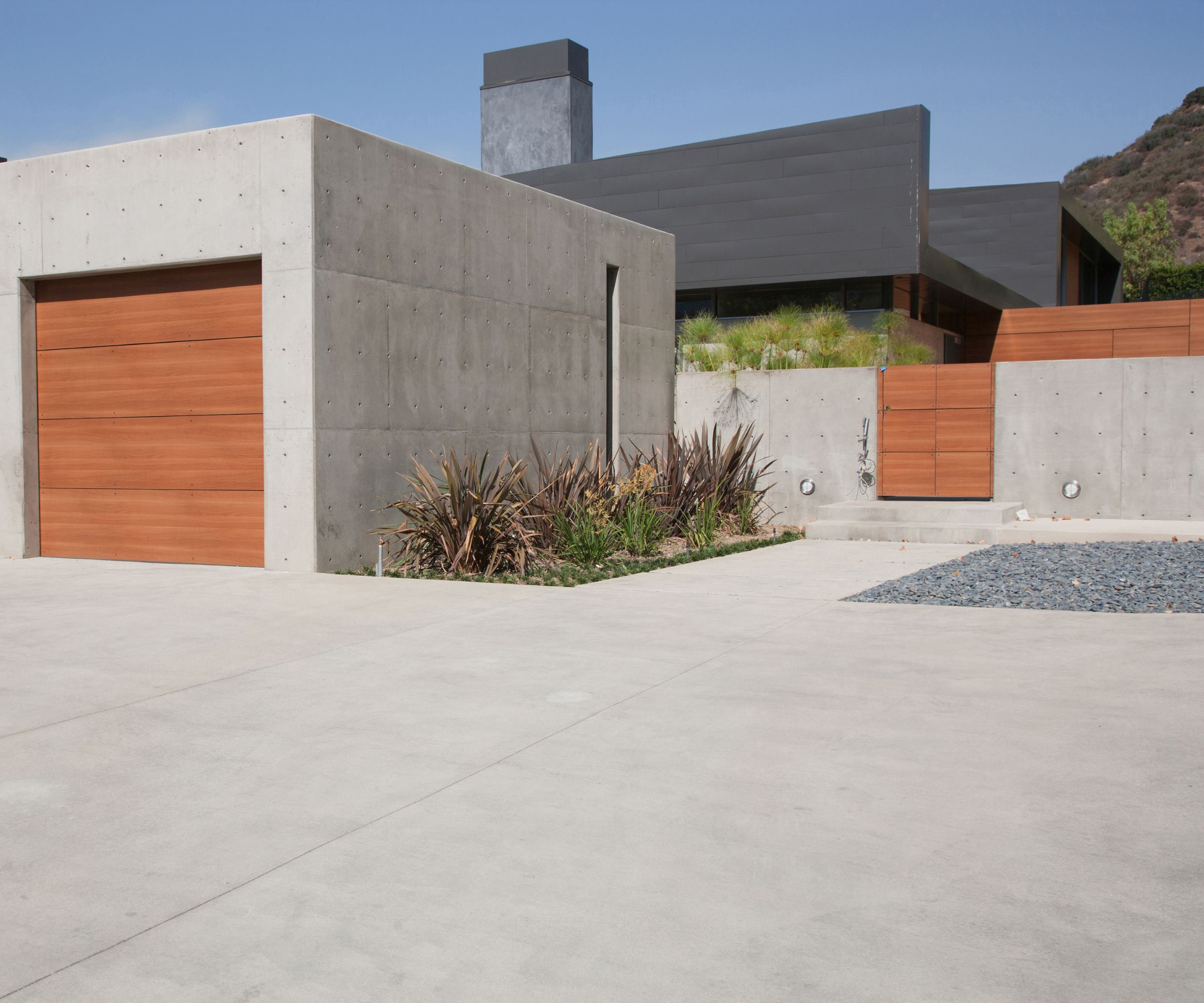
Nothing says modern quite like a poured concrete driveway. With its smooth, seamless surface and clean lines, it’s a bold choice that works particularly well with minimalist new build homes.
Poured concrete is especially effective in larger spaces, where uninterrupted expanses of surface can create a real sense of scale. It’s also hard-wearing and long-lasting, although it does require professional installation and proper expansion joints to prevent cracking over time.
Keep the rest of the landscaping pared back to complement the clean geometry of the drive – a few sculptural evergreens or ornamental grasses are often all you need.
10. Use tonal block paving for a clean and coordinated finish
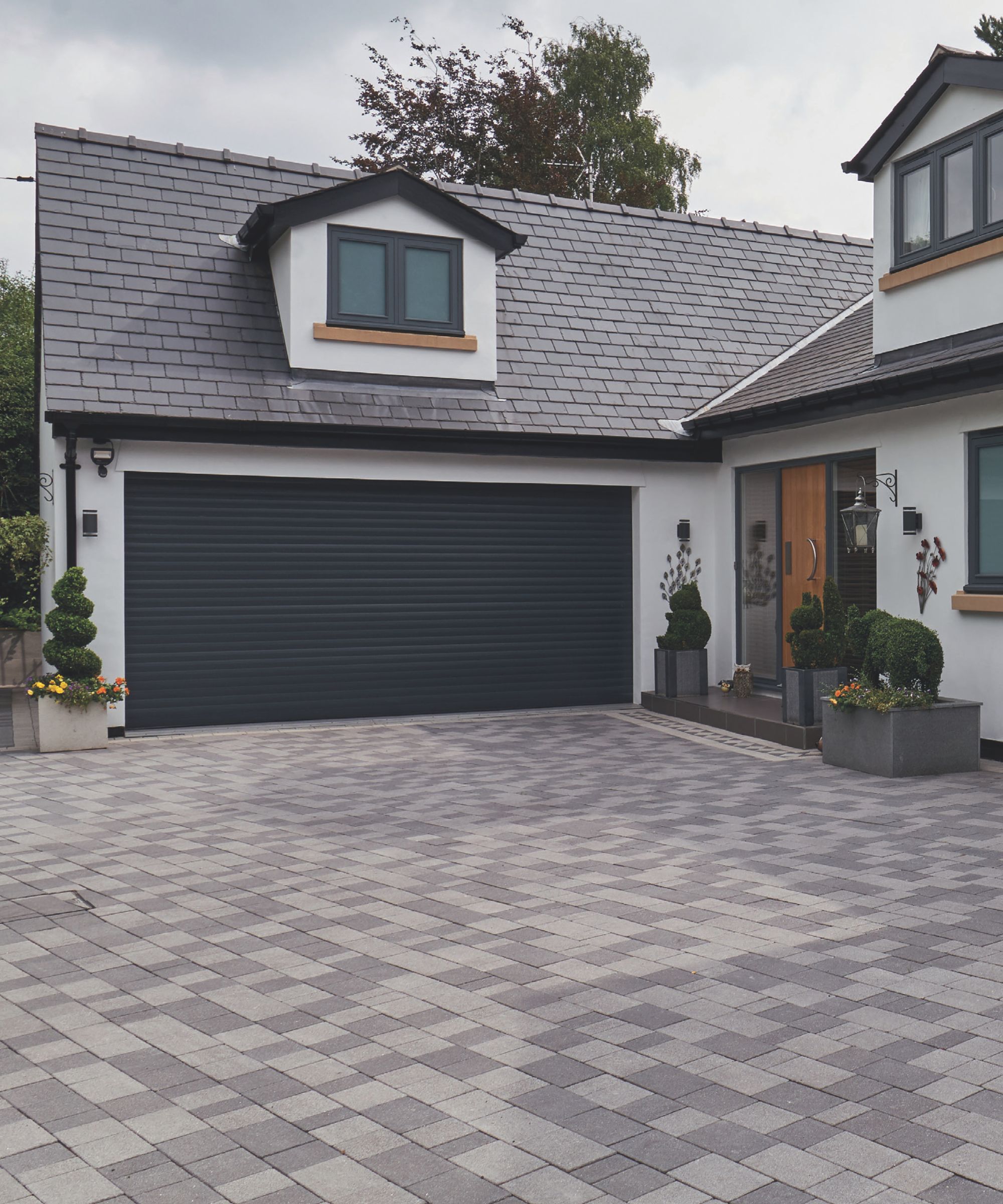
Block paving is a classic choice for modern driveways – but choosing a tonal colour palette can elevate the look and help everything feel more cohesive. In this example by Bradstone, a mix of light and mid-grey blocks has been laid in a tight, randomised block paving pattern. This approach works particularly well when it reflects the materials or colours of the home itself. Matching tones to the roof, window frames or garage door can help create a sense of balance and give the front of your home a more considered finish.
Block paving also offers a host of practical benefits. It’s low maintenance, hard-wearing, and can be easily repaired if needed.
11. Lay your driveway in a herringbone pattern
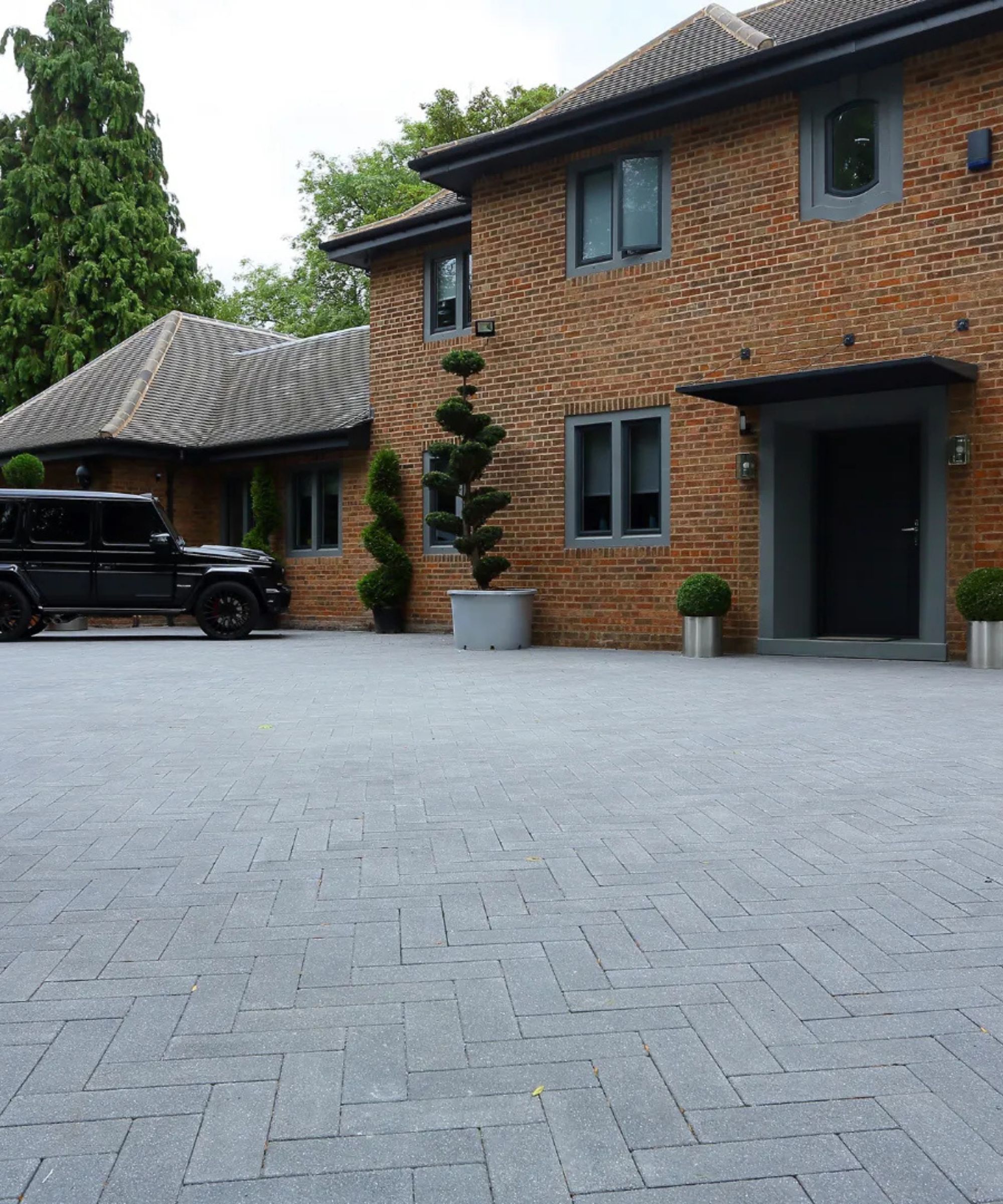
If you want to add interest to your driveway without introducing bold colours or complex materials, a herringbone pattern could be the answer. It’s a pattern that works especially well with slimline or narrow-format pavers, which help elongate the space and give a neat, tailored finish.
"The Bradstone Stonemaster range is ideal for creating these patterns, as it’s a contemporary option that offers the sleek look of natural granite and allows for creative designs,” says Neil Bills at Bradstone. “By mixing different grey shades or using darker blocks for edging, you can also make a compact driveway appear more dynamic and bespoke.”
12. Go bold with modular paving and gravel joints
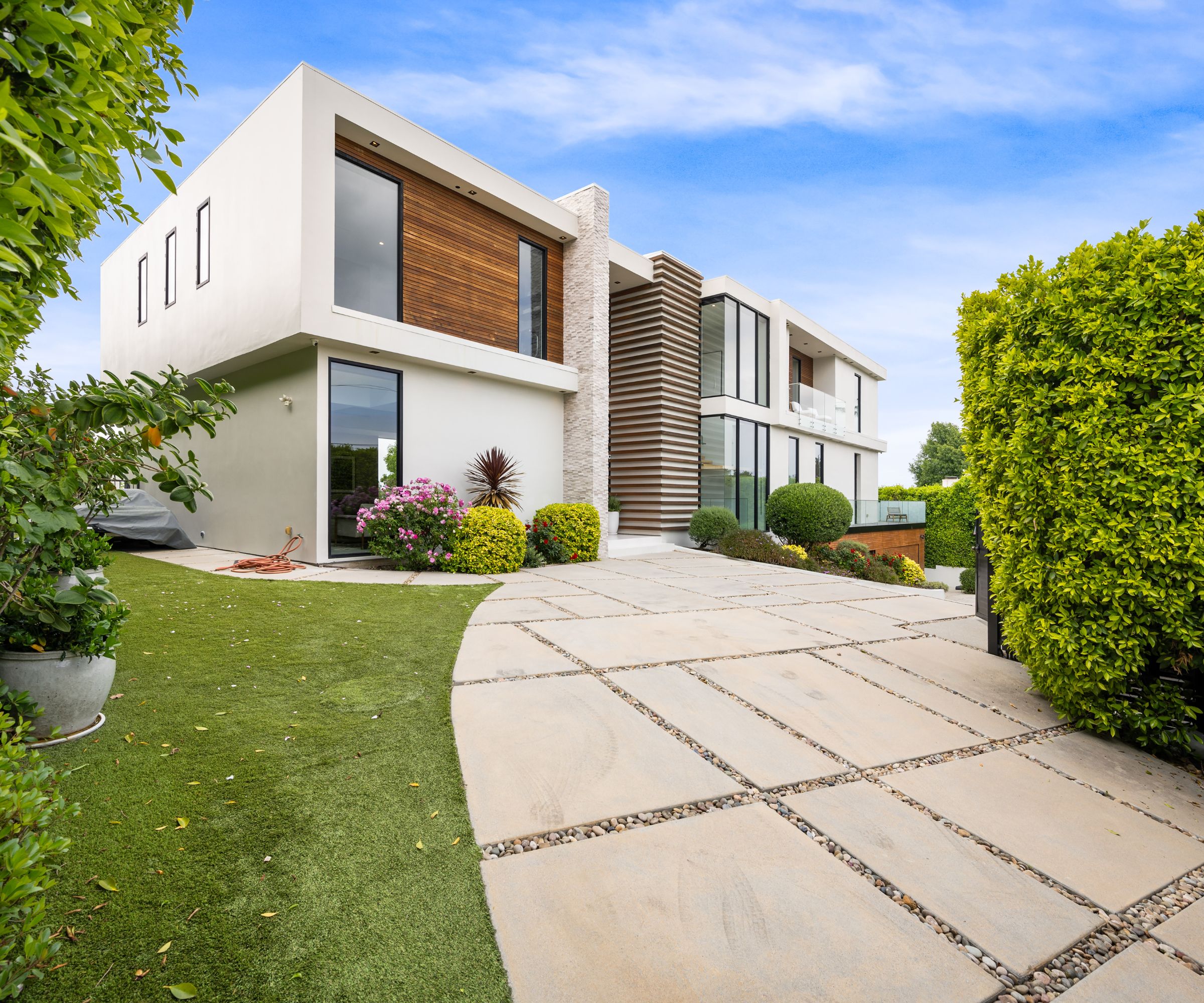
Looking for a driveway that feels modern but still full of character? Modular paving laid in a grid formation with gravel joints might be just the thing. It’s bold, it’s clean, and it gives your home that considered, architectural feel from the moment you arrive.
Here, large-format stone slabs are paired with neat gravel strips, creating contrast and texture without overcomplicating the design. The layout feels structured but not too formal, and those open joints are as practical as they are stylish, helping with drainage and reducing surface water.
One of the best things about this style is how flexible it is. You can play with the shape of the layout, introducing curves or angled paths, and it works just as well on smaller plots as it does in wide-open driveways.
Driveway costs can vary depending on the size, layout and materials you opt for, but with the right design, it’s an investment that can seriously boost your home’s kerb appeal. Whether you’re working with a tight space or planning something more ambitious, a well-chosen surface will pay off in both style and practicality.

Gabriella is an interiors journalist and has a wealth of experience creating interiors and renovation content. She was Homebuilding & Renovating's former Assistant Editor as well as the former Head of Solved at sister brand Homes & Gardens, where she wrote and edited content addressing key renovation, DIY and interior questions.
She’s spent the past decade crafting copy for interiors publications, award-winning architects, and leading UK homeware brands. She also served as the Content Manager for the ethical homeware brand Nkuku.
Gabriella is a DIY enthusiast and a lover of all things interior design. She has a particular passion for historic buildings and listed properties, and she is currently in the process of renovating a Grade II-listed Victorian coach house in the West Country.
